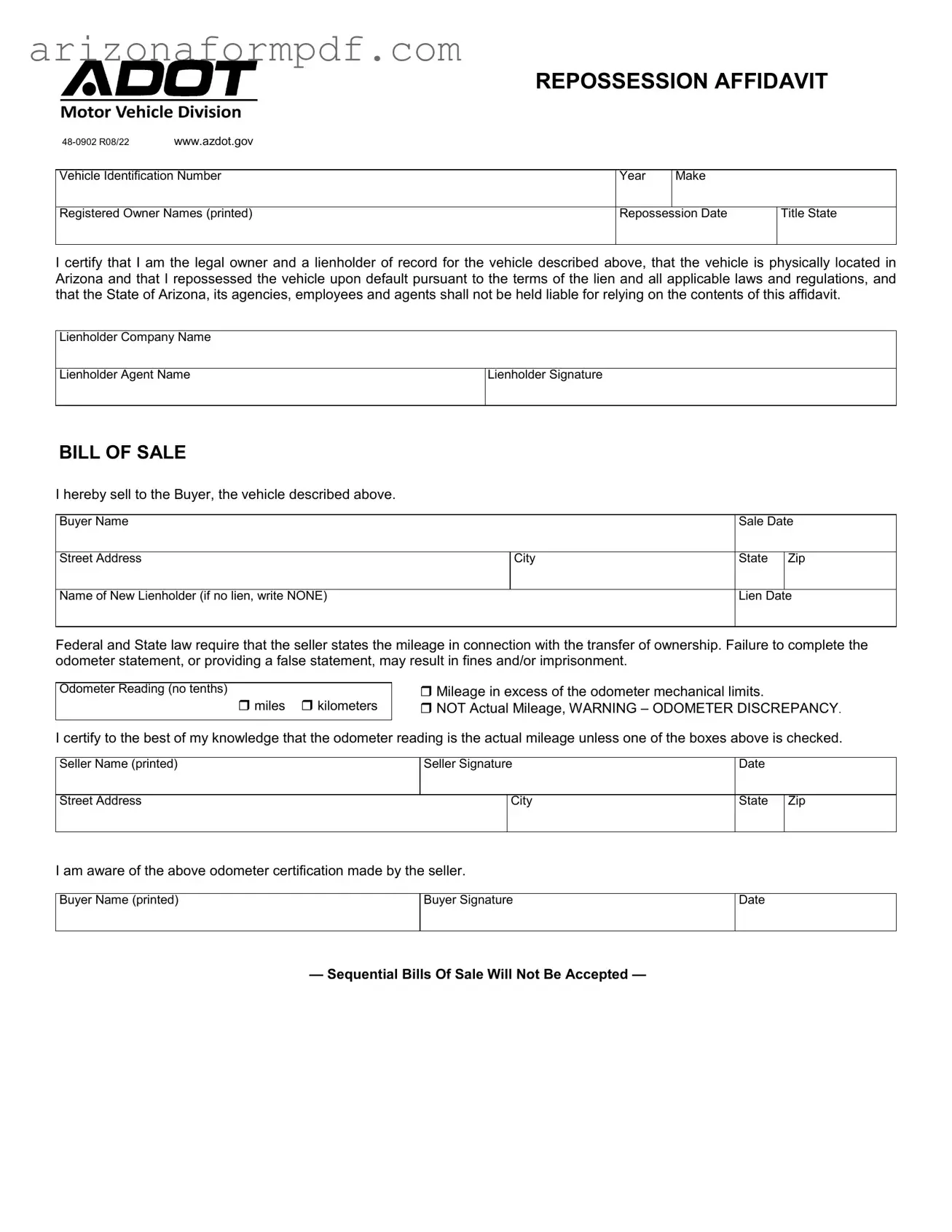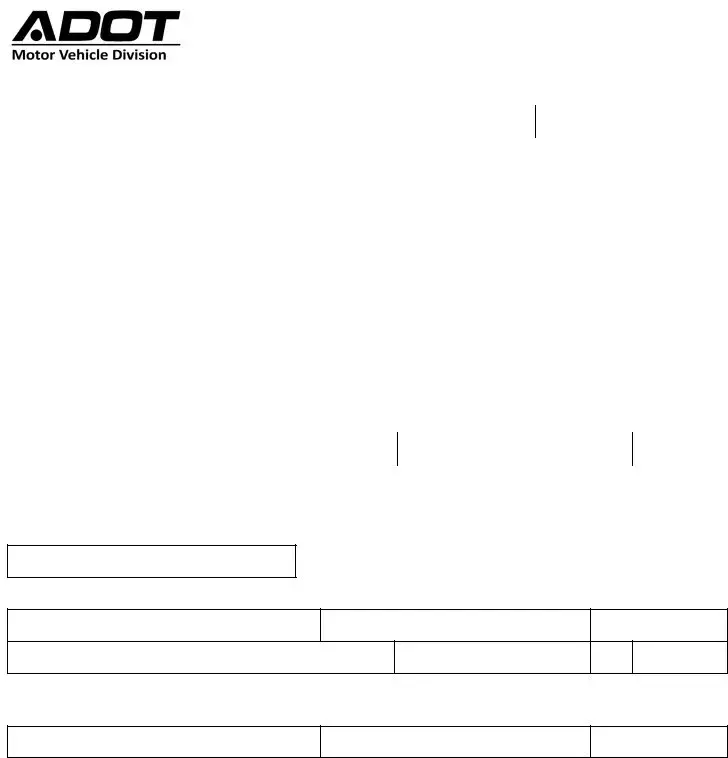The Arizona Repossession Affidavit form shares similarities with the Bill of Sale document. Both serve as legal instruments for the transfer of ownership of a vehicle. The Bill of Sale includes details such as the vehicle identification number, the names of the buyer and seller, and the sale date. Like the Repossession Affidavit, it requires signatures from both parties to validate the transaction. The primary difference lies in the context; while the Bill of Sale indicates a voluntary transfer, the Repossession Affidavit signifies a reclaiming of the vehicle due to default on a loan or lease.
Another document comparable to the Arizona Repossession Affidavit is the Lien Release form. This form is used to officially release a lien on a vehicle once the associated debt has been satisfied. Similar to the Repossession Affidavit, the Lien Release confirms the legal standing of the lienholder and the status of the vehicle. Both documents require the lienholder's signature and are essential for ensuring clear title transfer, but the Lien Release occurs after the debt is paid, while the Repossession Affidavit is executed when the vehicle is reclaimed.
The Affidavit of Ownership is also akin to the Arizona Repossession Affidavit. This document is used when an individual claims ownership of a vehicle, often in situations where the title is lost or not available. Both documents affirm the legal ownership of a vehicle and require the owner to certify their claims under penalty of perjury. The main distinction is that the Affidavit of Ownership is typically used to establish ownership, while the Repossession Affidavit is used to reclaim a vehicle due to non-payment.
Another related document is the Odometer Disclosure Statement. This form is required during the sale or transfer of a vehicle to document the odometer reading at the time of the transaction. Both the Odometer Disclosure Statement and the Repossession Affidavit emphasize the importance of accurate information and legal compliance. However, the Odometer Disclosure Statement focuses specifically on mileage, while the Repossession Affidavit addresses the circumstances surrounding the repossession of the vehicle.
The Vehicle Title is another document that bears similarities to the Arizona Repossession Affidavit. The title serves as proof of ownership and includes details about the vehicle and its registered owner. Both documents are critical in establishing ownership rights. However, the title is issued by the state and reflects the current owner, whereas the Repossession Affidavit is a statement by the lienholder asserting their right to reclaim the vehicle due to default.
The Security Agreement is also relevant to the discussion. This document outlines the terms under which a borrower secures a loan with collateral, typically a vehicle. Both the Security Agreement and the Repossession Affidavit involve the lienholder’s rights concerning the vehicle. The Security Agreement details the obligations of the borrower, while the Repossession Affidavit is a declaration that the lienholder has exercised their right to reclaim the vehicle due to the borrower’s default.
Lastly, the Power of Attorney for Vehicle Transactions is comparable to the Arizona Repossession Affidavit. This document grants authority to another individual to act on behalf of the vehicle owner in various transactions, including repossessions. Both documents require signatures and establish a legal relationship between the parties involved. The key difference is that the Power of Attorney allows someone else to act on behalf of the owner, while the Repossession Affidavit is a statement of action taken by the lienholder to reclaim the vehicle.

